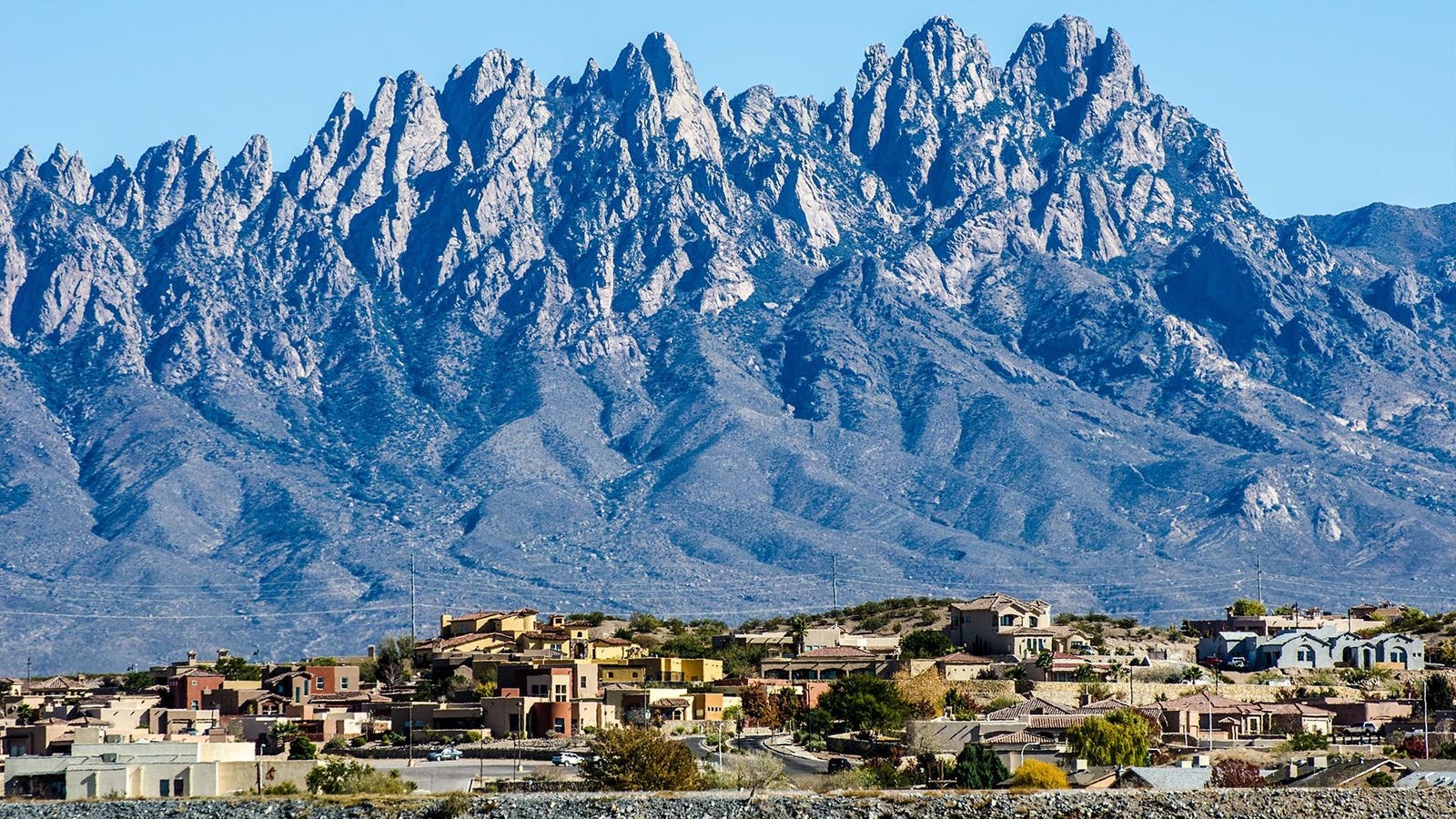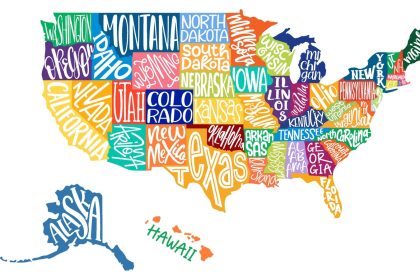Forbes compared more than 800 locales in America on everything from housing costs and taxes to healthcare, air quality, crime and climate change and natural hazard risk. These are the top 25 cities for retirees.
By William P. Barrett, Senior Contributor
Barry and Susan Mendelson raised their two children in a century-old three-story, six-bedroom Prairie-style home near Lake Michigan in Milwaukee, Wisc. They knew they wanted to move someplace warmer and cheaper for retirement. But it took them six years of looking and planning before they settled, this past March, into a newly built four-bedroom single-story home about 1,500 miles to the southwest in Las Cruces, N.M., with grand views of the rugged Organ Mountains. “We wanted to be thoughtful about it,” says Barry, 74, who now works from home as CEO of Capital Market Consultants Inc., a firm he founded that provides investment research and asset management to financial advisors. Susan, 66, completely retired this year from her job as the senior director of donor relations at the University of Wisconsin-Milwaukee. They reckon their lifestyle in the Mesilla Valley of the Chihuahuan Desert 50 miles north of El Paso, Texas, is at least 20% cheaper than it was in Milwaukee, with big savings on utility costs and real estate taxes. After selling their Milwaukee spread for more than $1 million, they could have easily bought their new Las Cruces home without a mortgage, but took out a small one to free up cash for contingencies.
Married for 35 years, the Mendelsons had no problem leaving behind in Milwaukee two grown children, ages 33 and 32. “We raised them to lead independent lives,” Barry says. Plus, their home is just a 50-minute drive from the El Paso, Texas, airport. There are no non-stop flights to Milwaukee, and the fastest travel time with a connection is more than five hours. No problem, shrugs Barry: “When we go, we’ll stay a week.”
This year, an estimated 4.1 million Baby Boomers in the U.S. will turn 65, the traditional retirement age, although most folks retire earlier or later. About one-tenth of new retirees relocate to another state for any number of reasons—climate, proximity to family, a better place to feed their passion for the arts or sailing or golf. But a major impetus for long distance moves is economics, as manifested by the cost of housing and living as well as state taxes.
To that end, Forbes presents the 25 Best Places to Retire In 2024, our annual list focused on high quality retirement living at an affordable price. Housing costs are a prime consideration, since the median price of single-family homes nationwide has risen to $394,000, up 47% since the start of 2020, according to the National Association of Realtors. That, and our continuing screens for such factors as natural hazard risks, primary care doctor availability and crime, means that our list includes some lesser known—but very inviting—places.
For example, Las Cruces, a town of 116,000 on our list for the first time in a decade, has a median home price of just $284,000. That’s 28% under the national median, and 51% below the median of $579,000 in arts mecca Santa Fe, N.M., 285 miles to the north. Sunny Spokane, Wash., on the list for its third straight year, has a median house price of $386,000, less than half the median of $879,000 in Seattle, 280 miles to the west, which is a great place to retire if you don’t mind lots of rainy days and have loads of money. (Both Santa Fe and Seattle are on our separate list of 25 Best Places To Enjoy Your Retirement, which, unlike this list, doesn’t treat high costs as disqualifying.)
Notably, sunny Pensacola, a city of 53,000 with a median house price of just $262,000, is our only pick in retirement-magnet Florida. Why? We ruled out other Sunshine State locales for having too high hurricane risks or home prices (or, in the case of The Villages, which made the list last year, too few doctors as well as high prices). Reflecting recent storm destruction and skyrocketing property insurance premiums, some retirement transplants to Florida are now reportedly packing up and relocating again.
All but two of our 25 picks have home prices below the national median; Charlotte, N.C., at $399,000, and Virginia Beach, Va., at $398,000, are both 1% above. The cheapest locale, Augusta, Ga., has a median home price of just $172,000, 56% below the national median.
Originally from the Midwest, Barry and Susan Mendelson considered and ruled out a number of places in their retirement search. They thought the Pacific Northwest around Seattle was too wet and cloudy and the Mid-Atlantic region too muggy and hot for too many months. Florida had the climate change issue. They like a change of seasons, which weighed against most of Arizona, although they thought about Tucson (which is also on our list).
Las Cruces gradually gained favor with them thanks to its dry climate, high desert scenery, outdoors stuff to do and the diversity of its Native American and Latino cultures. In their search, the Mendelsons kept an eye on economics. Frankly, New Mexico’s state tax policies are not the greatest for retirees (although the same could be said for Wisconsin). The marginal state income tax in New Mexico is 5.9% for most couples, and the state is one of 11 that taxes Social Security benefits. But Las Cruces’ cost of living is 16% below the national average. Barry says any added tax burden in Las Cruces is a fraction of what they paid in Milwaukee for property taxes and utilities on a far larger, energy-inefficient house. During their search, they combined kick-the-tire visits (for work or pleasure) with lots of online research. It was through Internet searching they found their real estate agent, Steve Barrett (no relation to this writer). A Las Cruces high school graduate, Barrett, 69, graduated from West Point and had a 20-year military career during which he lived around the U.S. and the world, before retiring in 1996, and returning to Las Cruces for a second career in real estate. He expects to retire in Las Cruces himself—some day.
All told, our new list includes places from 19 states in all four domestic time zones and, for the first time, Puerto Rico, which is a U.S. commonwealth. (The choice there is Dorado, on the island’s north shore.) Georgia has three picks, while Arizona, Pennsylvania and Virginia each have two.
The distribution is relatively divided between colder and warmer climates. In fact, the northernmost choice, Fargo, N.D. is the only city on the list for all 14 years of its existence. Pittsburgh, which also has frosty winters, is another of our perennial favorites—on the list for 11 of 14 years and for the seventh year in a row, despite its above-average crime rate. The Steel City remains one of the most affordable cities on the East Coast, with an abundance of universities providing cultural and learning opportunities and first-rate medical care.
Besides costs and taxes, our selection process takes into account such metrics as prospects for the local economy, air quality, serious crime and the availability of primary care doctors, as well as whether a place encourages an active lifestyle by making biking or walking convenient. More than a third of our picks are college towns, including Las Cruces (home of New Mexico State University). They tend to punch above their size in amenities, including lifelong learning, culture and dining—all at an affordable cost.
The 25 best places are listed in alphabetical order. Our full methodology is described below the list.
A-E
Athens, Georgia
Traditional college town (University of Georgia) of 130,000, 70 miles east of Atlanta. View Full Profile
Pros: Median home price $320,000, 19% below national median. Agreeable climate, good air quality. Big culture scene, big-time college athletics. Good retiree tax climate. Social Security plus up to $65,000 per person of retirement income exempt from state income tax. No state estate tax.
Cons: Serious crime rate above national average. Not very walkable.
Augusta, Georgia
Bucolic Savannah River city of 202,000, 145 miles east of Atlanta, known for hosting the Masters golf tournament. View Full Profile
Pros: Median home price $172,000, 56% below national median. High doctors-per-capita rate, good air quality, comfortable climate. Flat state income tax of 5.49% after $18,000 standard deduction for couple, exempts Social Security plus up to $65,000 per person of retirement income. No state estate tax.
Cons: Not very walkable or bikeable. Serious crime rate slightly above national average. So-so economy.
Bethlehem, Pennsylvania
Revived former steel town of 80,000 in Lehigh Valley, 75 miles north of Philadelphia and 85 miles west of New York City, home to Lehigh University and Moravian College. View Full Profile
Pros: Median home price of $322,000, 18% below national median. Above-average number of primary care physicians per capita. Good air quality. Low serious crime rate. Good retiree tax climate. State income tax is a flat rate of 3.07%, but most retirement income and all Social Security benefits are exempt from the tax.
Cons: Cold winters. State inheritance tax hits the entire estate and all heirs, other than a spouse.
Charlotte, North Carolina
Bubbling banking and business center of 920,000 in the Piedmont Plateau center of the Carolinas. View Full Profile
Pros: Median home price $399,000, just 1% above national median. Good climate and air quality. High primary care doctors-per-capita rate. Strong economy. No state income tax on Social Security. No estate or inheritance tax.
Cons: Serious crime rate above national average. Not very walkable or bikeable.
Columbia, Missouri
College town (University of Missouri, Stephens College, Columbia College) of 142,000, midway between St. Louis and Kansas City. View Full Profile
Pros: Median home price $292,000, 26% below national median. High ratio of primary care doctors per capita. Good air quality. Somewhat bikeable. Top state income tax rate, which covers most filers, just lowered to 4.80% with new complete exemption for Social Security benefits.
Cons: Serious crime rate above national average. Not very walkable.
Dorado, Puerto Rico
Lively Atlantic Ocean city of 36,000 with great beaches and golfing, 20 miles west of San Juan. on north coast of Puerto Rico, a U.S. commonwealth. View Full Profile
Pros: Median home price $375,000, 5% below national U.S. median. High ratio of primary care doctors per capita. Good air quality. Serious crime rate below U.S. average. Somewhat walkable and bikeable. Good retiree tax climate. Commonwealth income tax can be taken as dollar-for-dollar credit on U.S. federal income tax returns. No commonwealth tax on Social Security.
Cons: Commonwealth estate tax. Lack of Spanish language proficiency can be hindrance.
F-M
Fargo, North Dakota
North Dakota’s largest city, population 137,000, adjoining Minnesota on the Red River of the North. View Full Profile
Pros: Median home price of $291,000, 26% below national median. High number of primary care doctors per capita. Good air quality. Very bikeable, somewhat walkable. State income tax tops out at 2.50% for couples with taxable income above $74,750, after federal standard deduction.
Cons: Cold winters. Serious crime rate above national average. State income tax on Social Security benefits.
Greenville, South Carolina
Blue Ridge Mountains foothill city of 74,000 in South Carolina’s Upstate region, midway between Atlanta and Charlotte. View Full Profile
Pros: Median home price $307,000, 22% below national median. High number of primary care doctors per capita. Good climate, somewhat walkable and bikeable. No state estate tax or tax on Social Security benefits.
Cons: Serious crime rate above national average. While dropping, state income tax rate is still a relatively high 6.4% for couples with taxable income above $17,330, after federal standard deduction.
Iowa City, Iowa
Famous college town (University of Iowa) of 77,000 persons in southeastern Iowa. View Full Profile
Pros: Median home price $285,000, 28% below national median. Very high ratio of primary care physicians per capita. Good air quality. Comfortable climate. Very bikeable, somewhat walkable. Low serious crime rate.
Cons: Cold winters. So-so retiree state tax climate (but no state income tax on Social Security or other retirement income).
Las Cruces, New Mexico
Sunny, high-Chihuahuan Desert college town (New Mexico State University) of 116,000, 45 miles north of El Paso and the Mexican border. View Full Profile
Pros: Median home price $284,000, 28% below national median. Dry climate (but very warm in summer), decent air quality, somewhat bikeable.
Cons: Serious crime rate above national average. So-so retiree tax climate, with a marginal state income tax rate of 5.9% for most couples, including on Social Security.
Lawrence, Kansas
Classic college town (University of Kansas) of 96,000, 40 miles west of Kansas City. View Full Profile
Pros: Median home price $302,000, 23% below national median. Excellent ratio of primary care physicians per capita. Very bikeable, somewhat walkable. Relatively low natural hazard risk.
Cons: Serious crime rate above national average. State income tax tops out at 5.70% for a couple with taxable income above $60,000 and can hit Social Security benefits, depending on overall income.
Lexington, Kentucky
Central Kentucky college town (University of Kentucky, Transylvania University) of 323,000. View Full Profile
Pros: Median home price of $298,000, 24% below national median. Excellent ratio of primary care physicians per capita. Good air quality. Low serious crime rate. Flat state income tax of 4.0%, with exemptions for Social Security, plus up to $31,100 per person of retirement-type income
Cons: State inheritance tax, although money left to close relatives is exempt. So-so economy. Not that walkable.
Lincoln, Nebraska
State capital and college town (University of Nebraska) of 298,000, 50 miles southwest of Omaha. View Full Profile
Pros: Median home price of $276,000, 30% below national median. Adequate primary care doctors per capita. Very bikeable, somewhat walkable. Serious crime rate at national average.
Cons: State income tax hits Social Security benefits. State inheritance tax hits anything over $40,000 left to relatives other than spouse.
N-R
New Braunfels, Texas
Two-river town of 118,000, on the edge of the scenic Texas Hill Country between San Antonio and Austin. View Full Profile
Pros: Median home price of $359,000, 9% below national median. Low serious crime rate. Adequate number of primary care physicians per capita. No state income, estate or inheritance tax.
Cons: Not very bikeable or walkable.
Pensacola, Florida
Sunny Florida Panhandle city of 53,000, along northern Gulf of Mexico. View Full Profile
Pros: Median home price $262,000, 34% below national average. Good air quality. Good climate. Somewhat bikeable. No state income, estate or inheritance tax.
Con: Serious crime rate slightly above national average.
Pittsburgh, Pennsylvania
Western Pennsylvania city of 303,000, laced with rivers and colleges. View Full Profile
Pros: Median home price of $227,000, 42% below national median. Excellent ratio of primary care doctors per capita. Very bikeable and walkable. State has flat 3.07% income tax that excludes Social Security benefits and most retirement income.
Cons: State inheritance tax hits the whole estate and all heirs, other than a spouse. Serious crime rate somewhat above national average.
Pittsfield, Massachusetts
Pretty Berkshire Mountains city of 43,000, 135 miles west of Boston and 40 miles southeast of Albany, N.Y. View Full Profile
Pros: Median home price $283,000, 28% below national median. High ratio of primary care physicians per capita. Good air quality. Somewhat walkable and bikeable. Long acclaimed for a big culture scene, mainly during summer.
Cons: Serious crime rate above national average. State taxes estates above $2 million (raised this year from $1 million). State income tax is 5% for most couples, with Social Security excluded, but there is a new millionaire’s surtax of 4% that includes capital gains from sale of house.
Roanoke, Virginia
Scenic Blue Ridge Mountains city of 100,000, 240 miles southwest of Washington, D.C. View Full Profile
Pros: Median home price $257,000, 35% below national median. High number of primary care doctors per capita. Good air quality. Comfortably mild climate. Somewhat walkable and bikeable. No state tax on Social Security, estates or inheritance.
Con: Serious crime rate above national average.
Rochester, Minnesota
Home of famed Mayo Clinic and 124,000 people, 85 miles southeast of Minneapolis. View Full Profile
Pros: Median home price of $320,000, 19% below national median. Outstanding ratio of primary care doctors per capita. Low serious crime rate. Very bikeable.
Cons: Cold winters. State taxes Social Security as part of a progressive state income tax, which hits 9.85% for income above $321,450 for a couple.
S-Z
Savannah, Georgia
Gracious river city of 164,000, known for its preserved architecture and historic city squares, 30 miles inland from the Atlantic Ocean. View Full Profile
Pros: Median home price of $316,000, 20% below national median. Comfortable climate, mild winters. Good air quality. Good ratio of primary care physicians per capita. State income tax is a flat rate of 5.49% after $18,000 standard deduction for a couple, with Social Security plus up to $65,000 per person of other retirement income exempt. No state estate tax.
Cons: Relatively high (but not very high) natural hazard risk rating from FEMA.
Sioux Falls, South Dakota
South Dakota’s largest city and scenic river town of 214,000, 240 miles southwest of Minneapolis. View Full Profile
Pros: Median home price $322,000, 18% below national median. Excellent ratio of physicians per capita. No state income, estate or inheritance tax.
Cons: Serious crime rate above national average. Not very walkable.
Spokane, Washington
Appealing river city of 231,000, 280 miles east of Seattle. View Full Profile
Pros: Median home price of $386,000, 3% below national median. Good ratio of primary care physicians per capita. Very bikeable, pretty walkable. No state income tax (although there’s a 7% “excise tax” on investment gains above $250,000).
Cons: Serious crime rate above national average. State estate tax
Tucson, Arizona
Bustling sunny Sonoran Desert city of 552,000 with major college (University of Arizona), 65 miles north of Mexican border. View Full Profile
Pros: Median home price $329,000, 17% below national median. High number of primary care doctors per capita. Very bikeable, somewhat walkable. Flat state income tax of 2.5%, with Social Security exempt and no state estate or inheritance tax.
Cons: Serious crime rate above national average. Poor air quality.
Virginia Beach, Virginia
State’s largest city, with a population of 452,000 and a resort feel, on the Atlantic Ocean at mouth of Chesapeake Bay, 200 miles south of Washington, D.C. View Full Profile
Pros: Median home price $398,000, just 1% above national median. Good air quality, comfortable climate. Somewhat bikeable. Very low serious crime rate. State income tax rate tops out at 5.75% for couples with taxable income above $17,000, but no state tax on Social Security. No estate or inheritance tax.
Con: Not very walkable.
Yuma, Arizona
Dry, extremely sunny desert and Colorado River city of 101,000, 170 miles east of San Diego near Mexican border. View Full Profile
Pros: Median home price $290,000, 26% below national median. Good air quality, very bikeable. Adequate number of primary care doctors per capita. Good economy. Flat state income tax of 2.5%, with Social Security exempt and no state estate or inheritance tax.
Cons: Serious crime rate somewhat above national average. Not very walkable.
2024 METHODOLOGY
We compiled data on more than 800 places with populations above 10,000, in every state, the District of Columbia and, for the first time, Puerto Rico. The main factors we took into account involve money, including median home prices and overall cost of living, both compared to national measures. Also reviewed are state taxes, including marginal tax rates, income tax exemptions for Social Security benefits and other retirement income, and the existence of state estate or inheritance taxes. On the theory that a good local economy helps retirees looking for part-time work or later selling a home, we incorporate job and economic growth prospects using the Milken Institute’s latest “Best Performing Cities” report. Quality of life is also important, so we look at a number of non-economic indicators, ruling out cities with far too high rates of serious violent crime compared to national averages or way too few primary care doctors per capita. We also take into consideration factors that promote an active retirement, including air quality and ratings for walkability (how easy it is to shop and get to places on foot) and bikeability (whether dedicated lanes and other measures make it easy to bike around town). While the data underlying the list is quantitative, our final picks are qualitative, reflecting our judgment.
For the fifth year, we weigh each area’s vulnerability to climate change and natural disaster risk, primarily using the FEMA National Risk Index for Natural Hazards, which calculates for every county, including municipalities in Puerto Rico, a vulnerability measure embracing 18 natural hazards, including flooding, hurricanes, landslides, earthquakes and wind. We automatically exclude places assigned a “very high” risk rating.
Our full write-up for each of our picks includes extra information points that don’t influence our final choices. These include elevation above sea level and county-wide results in the 2020 presidential election.
Sources for our data include: the Federal Bureau of Investigation, the U.S. Environmental Protection Agency, the U.S. Bureau of Labor Statistics, FEMA, the Tax Foundation, the Milken Institute, individual state tax departments, zillow.com, trulia.com, bestplaces.net, neighborhoodscout.com, the National Association of Realtors, countyhealthrankings.org, walkscore.com and the League of American Bicyclists.
MORE FROM FORBES
Read the full article here

















